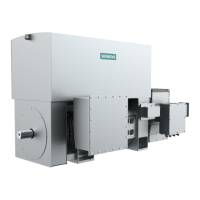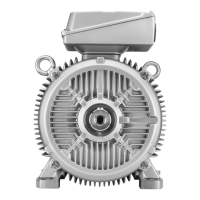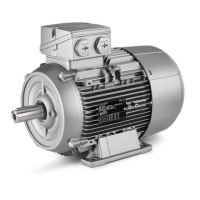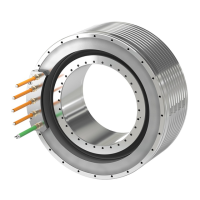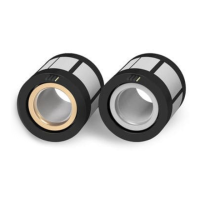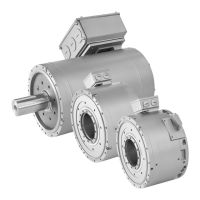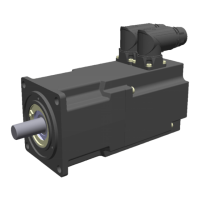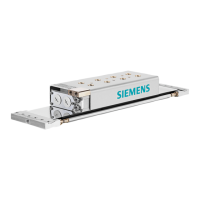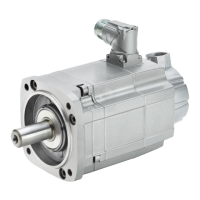
Do you have a question about the Siemens Simotics HV C 1NA14544WA600AG0-Z and is the answer not in the manual?
Document scope and how to use it.
How to create custom documentation from online resources.
Responsibilities of plant personnel for safe operation and compliance.
Essential safety rules for working on electrical equipment, especially in a voltage-free state.
Defines requirements for personnel performing work on the machine.
General precautions for safe operation and handling, including warnings.
Precautions for handling components sensitive to electrostatic discharge.
Machine compliance with EMC directives and standards.
Safety measures related to electromagnetic fields generated by equipment.
Describes the intended use of the electrical machine in industrial environments.
Outlines the design compliance with relevant standards and regulations.
Details the internal cooling circuit design and heat dissipation methods.
Information on integrated temperature sensors and optional devices.
Identifies residual risks and necessary safety precautions for plant configuration.
Specifies requirements for circulating cooling water quality for optimal performance.
Addresses potential hearing impairment from machine noise and mitigation measures.
Permissible voltage and frequency tolerances for reliable operation.
Guidelines for safe handling, transport, and storage of the machine.
Prerequisites and conditions for starting installation work.
Importance of measuring insulation resistance for machine condition assessment.
Procedure for testing insulation resistance and polarization index.
Instructions for safely lifting and positioning the machine.
Measures for accurate alignment and secure fastening of the machine.
Procedures and safety measures for lifting the machine.
Procedures for connecting the cooling water system.
Final checks and cleanup after installation.
General safety precautions for electrical work on the machine.
Criteria for selecting appropriate cables for power and auxiliary circuits.
Proper cable routing to prevent water ingress into the terminal box.
Explains terminal markings for 3-phase machines according to IEC standards.
Procedures and specifications for connecting the grounding conductor.
How to connect wiring for the desired motor rotation direction.
Defines how to determine and change the motor's direction of rotation.
Maintaining safe air gaps between live electrical components.
Specific steps for connecting aluminum conductors to prevent issues.
Final checks before closing the terminal box.
Wiring temperature sensors for monitoring stator winding temperature.
Essential checks to perform before starting the machine.
Verifying the availability and readiness of the cooling water supply.
Checking insulation resistance and PI values before operation.
Procedure for greasing roller bearings before initial startup.
Steps for performing a test run to verify machine operation.
Measures to prevent damage from overvoltages during switching.
Critical safety precautions during machine operation.
Indicators of abnormal operation and initial response.
Procedures for starting the machine, with and without load.
Measures for short-term shutdowns to prevent damage.
Procedure for draining cooling water when taking the machine out of service.
Preventing bearing damage during extended periods of inactivity.
Steps and considerations for taking the machine out of service.
Troubleshooting guide for common electrical faults and their remedies.
Troubleshooting guide for common mechanical faults and their remedies.
Identifying and rectifying faults related to roller bearings.
Troubleshooting common issues with the water-cooled system.
Safety precautions before performing any maintenance work.
Schedule and checks for the initial service.
Periodic checks to ensure continued optimal performance.
Guidelines for regreasing roller bearings with appropriate grease.
Procedures for repairing faults and damage.
Detailed instructions for removing and handling roller bearings.
Information required when ordering spare parts.
How to use online tools to find and order spare parts.
Identifies spare parts for the stator and rotor assemblies.
Lists spare parts for the non-drive end roller bearings.
Steps to prepare the machine for safe disassembly.
General procedures for dismantling the machine.
Guidelines for sorting and recycling machine components.
How to contact technical support for inquiries.
How to find and contact local service personnel.
Information about the Siemens Industry Online Support app.
Table of torque values for various screw sizes and applications.
Details the specific applications for the mentioned tightening torques.
Guidance on locating quality verification documents for the machine.
How to find documentation for third-party components.

